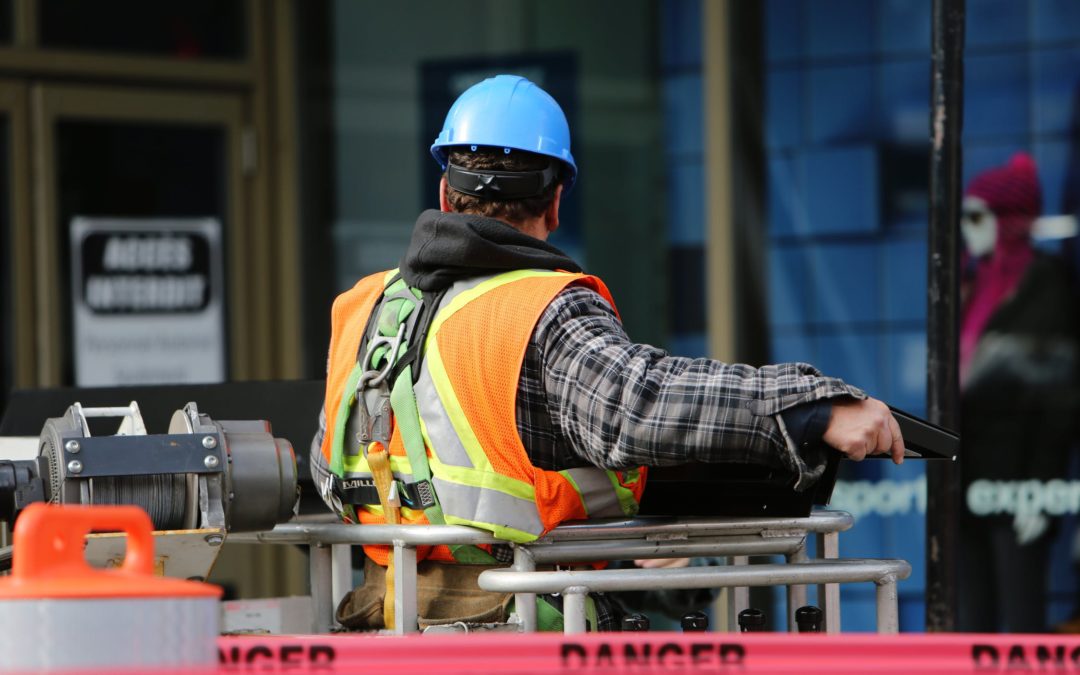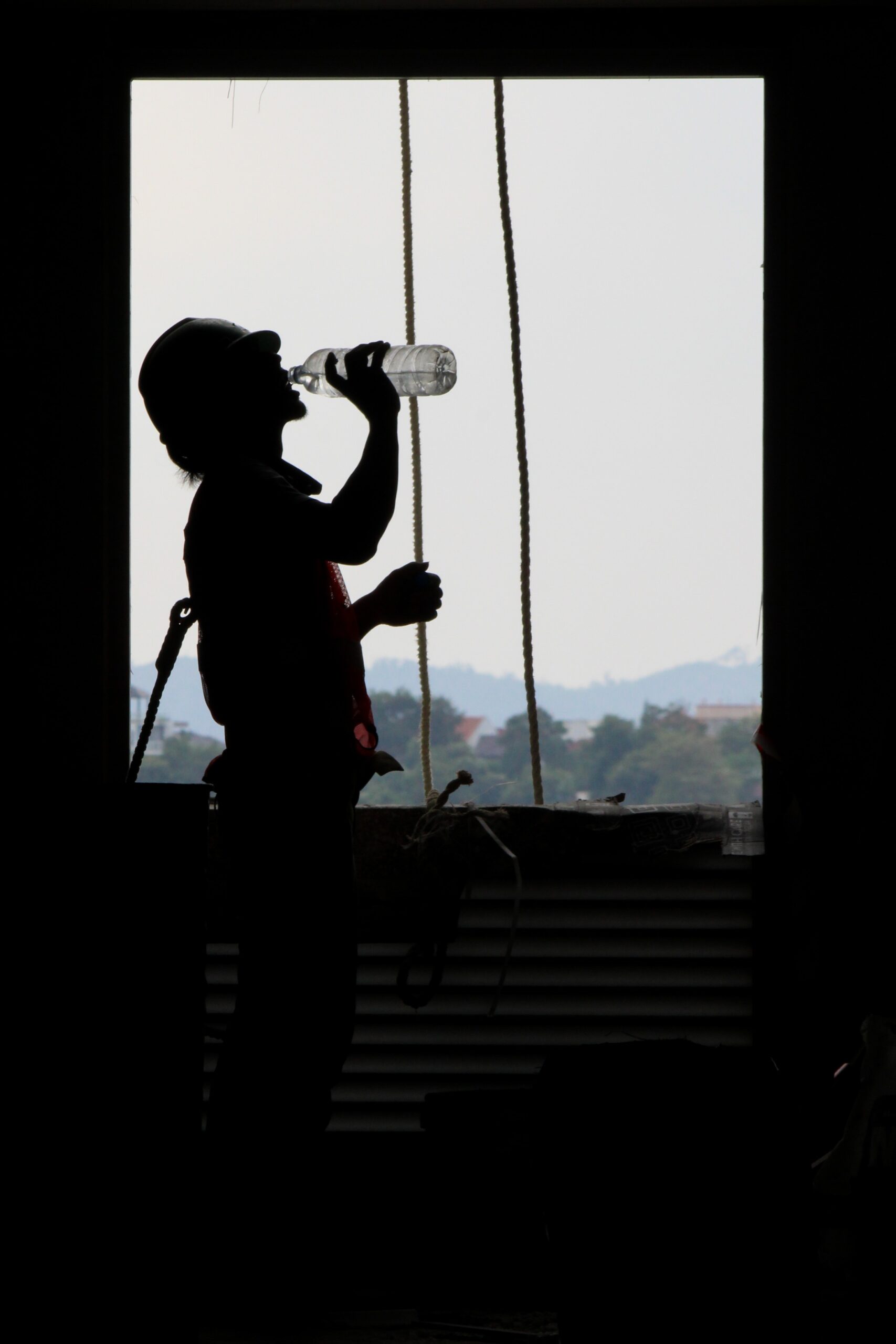While most of us learned our ABC’s in kindergarten, I am a firm believer in repetition and relearning as we grow. Relearning the alphabet for fall protection is something I learned early on as a safety professional.
So what exactly is the ABC’s of fall protection? The ABC’s of fall protection is a simple way to remember the components of fall protection and what to look for when inspecting fall protection before working from heights.
What are the ABC’s of fall protection? (Don’t worry, this alphabet only includes 3 letters.)
- Anchorage Point
- Body Harness
- Connecting Device
(A) Anchorage Point
The anchorage point is the item you are tying off to. According to OSHA only approved anchorage points can be used to tie off to. This anchorage point must be able to support 5,000 lbs of force per employee. So, that piece of conduit hanging from the ceiling in your basement probably isn’t the best thing to tie off to if you need to change a light bulb. You can not tie off to handrails or mid rails! In man lifts for example, there are designated approved anchorage points that the manufacture will identify to the operator.
(B) Body Harness
Second for the Fall Protection ABC’s is Body Harness. All harnesses are different. When inspecting your harness there are some key things to look out for. Fit your harness for your body specifically. No sharing!
- Inspect the webbing for rips, cuts, and tears
- Look at the hardware of the harness for rust, burns or cracks
- Verify the tag of the harness for the harness’s capacity.
Store your fall protection in a designated area away from all other tools and out of weather/direct sunlight. If your harness is damaged, immediately take it out of service and notify others to not use it. Make sure to fit your harness for your build and body frame. The D-Ring should be between your shoulder blades, chest strap right at the mid chest line, and leg straps should allow 2 fingers in-between, so it is not too loose or too tight.
(C) Connecting Device
The last letter of the Fall Protection ABC’s is C” for Connecting Device. There are typical 2 types of connecting devices
- Lanyards
- Self-retracting devices
When selecting a connecting device, you need to understand your working height. See the link below for the best way to select your connecting device.
https://www.millerfalltraining.com/fallclearance/#home0&ui-state=dialog
Why it’s Important?
Slips/Trips/Falls are the number 1 leading cause of fatalities, and injuries in both constructions, and in general industry. According to the National Safety Council, in 2016, 697 workers died from falling to another level. In addition, a whopping 48,000 workers were injured from falls, that required days off of work.
https://www.nsc.org/work-safety/safety-topics/slips-trips-falls
The OSHA standard for fall protection for construction is 6ft. For general industry, the standard says 4ft. In both construction, and in general industry, working from heights is a daily activity. Some examples of working from heights are:
- Leaning edges such as stairwells
- Rooftops
- Working from ladders
- Performing work from man lifts or scissor lifts
- Open holes/trenches
- Standing on top of tanks, vessels, or storage containers to work
- Walking on or working from catwalks
What areas does your company work at?
Any time you are working from heights, remember the ABC’s of fall protection. All falls can be prevented. If you see another coworker working from heights unprotected, utilize Stop Work Authority, and correct the behavior. For tips on how to utilize Stop-Work Authority, see our separate blog post:
Preventing Falls in your workplace
The easiest way to avoid a fall, is to prevent it from taking place. Below are some systematic approaches to preventing fall hazards.
Identify Fall Hazards
As you arrive to the job site, conduct a safety walk around and identify all areas where you are working from heights. Be sure to also identify other fall hazards such as wet/slippery surfaces, changes in elevation, and housekeeping issues such as loose extension cords, or building material. Discuss fall hazards on your JSA and make sure all crew members are aware of the areas they may be working in.
Eliminate
After you have identified all fall hazards try to eliminate the fall hazard. Examples of eliminating fall hazards include: installing guard rails around leaning edges, cleaning up spills, ensuring ladders are in good working order, covering open holes, and maintaining good housekeeping.
Fall Protection
Fall protection should be the last resort if fall hazards can not be removed from the workplace. Inspect all equipment and make sure all team members are trained on how to properly fit their harness. Calculate your working height, and select the appropriate connecting device. Pick your anchor point, and verify it is able to withstand 5,000 lbs. Want practice? Try the game Harness Hero available on the App Store and Google Play Store for FREE! This App walks you through different scenarios and shows you the outcomes of what a fall will look like after you select your fall protection. Below is a video showing how the Game works! Challenge yourself and try it out!
As a Recap
We understand the severity of fall hazards. We also understand how to eliminate fall hazards and how to mitigate them if the hazard can not be completely eliminated. The next time you are expected to work from heights say your fall protection ABC’st It could save you!
Did this article help? We hope this toolbox talk was informative, helpful and easy to relate to. Please visit B42L.com to learn more about strengthening your safety resume and other safety topics to improve your company’s safety culture.





